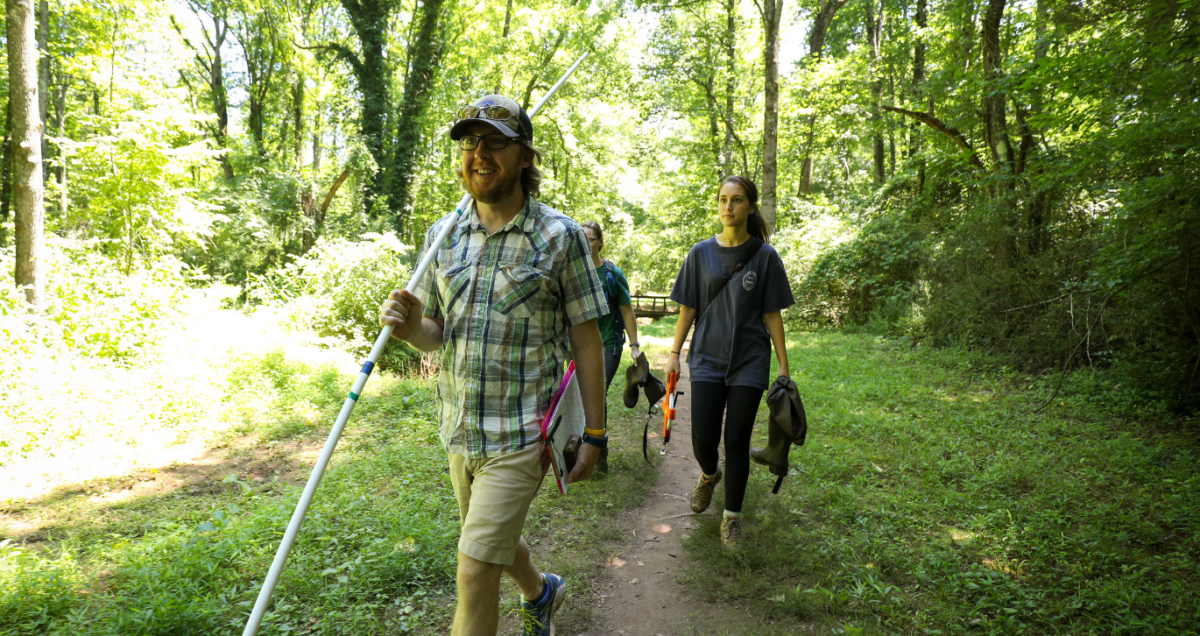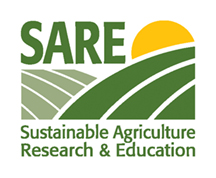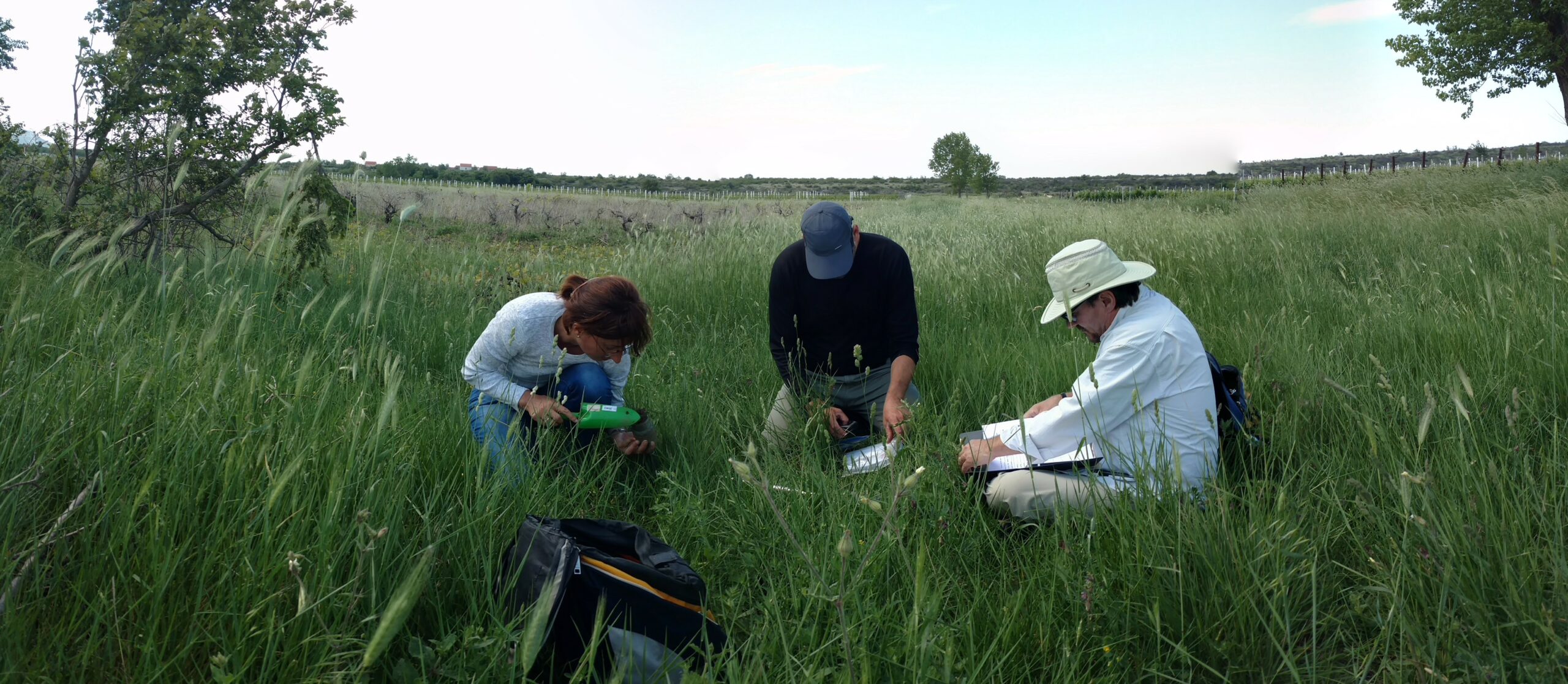
Engaging with farmers as equal partners positions a small liberal arts university as a trustworthy partner and resource.
We were able to establish longer-term relationships that we might not have been able to otherwise because of the grant. SARE gave us legitimacy in the community, that we were doing equivalent work to the local land grant university.”
—Dr. John Quinn, Research and Education Grantee
Becoming a Legitimate Sustainable Agriculture Resource Through Relationship Building
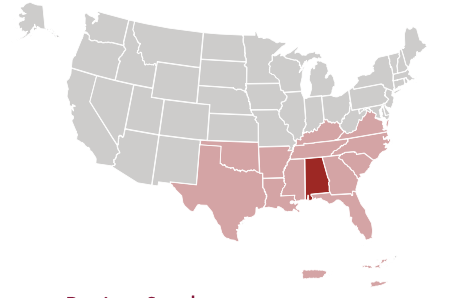
Region: Southern
State: Alabama
Grant Type: Research and Education
Grant: LS16-273
SARE POST-PROJECT EVALUATION IMPACT MODEL
This evaluation impact model is specific to this SARE-funded project.
Sustainability Impacts
The project grantees and stakeholders contributed to the following sustainability impacts:
- Environmental sustainability impacts
- Economic sustainability impacts
- Production efficiency impacts
Grantee Indicators
(University Researcher)
Project grantees (defined above) achieved sustainability impacts by engaging with the following indicators through involvement with project activities:
- Increased knowledge/skills
- Increased capacity/motivation
- Increased engagement
- Practice change
- Career growth
Stakeholder Indicators
(Students, Farmers)
Project stakeholders (defined above) achieved sustainability impacts by engaging with the following indicators through involvement with project activities:
- Increased knowledge/skills
- Increased capacity/motivation
- Increased engagement
- Practice change
- Career growth
The Success Story
Rapid urbanization is threatening the existence and viability of farmland. Many degraded second-growth forests in the South produce minimal ecological benefits. Silvopasture—the deliberate integration of trees and grazing livestock on the same land—is one means of strengthening a small farm’s economic viability while also enhancing environmental quality. Dr. John Quinn with a Furman University research team partnered with pork farmers in South Carolina, North Carolina, and Georgia, removing invasive plants from existing forest patches and planting fast-growing forage mixtures that the farmers used to feed their pigs. Additional pastured pork producers participated in the social network analysis component of the project. Through these collaborative activities the research team built relationships with producers across the region who came to view Furman University as a trusted resource in sustainable farming.
It really helped me get back to studying those topics. My dissertation was focused on sustainable agriculture. When I came down to South Carolina, the farms here are very different from farms in Nebraska. ... There aren’t big cornfields here. It’s a forest, it’s pasture, maybe there’s a five-acre row crop or vegetable, so it’s a much more complex system. This grant really helped me understand that system, ask subsequent questions and get to know more farmers, which then allowed us to build out that network and understand the challenges farmers in this region were facing. I’d say 70% of the research we’ve been doing since then has been this idea of a multifunctional farm landscape.””
—Dr. John Quinn, Research and Education Grantee
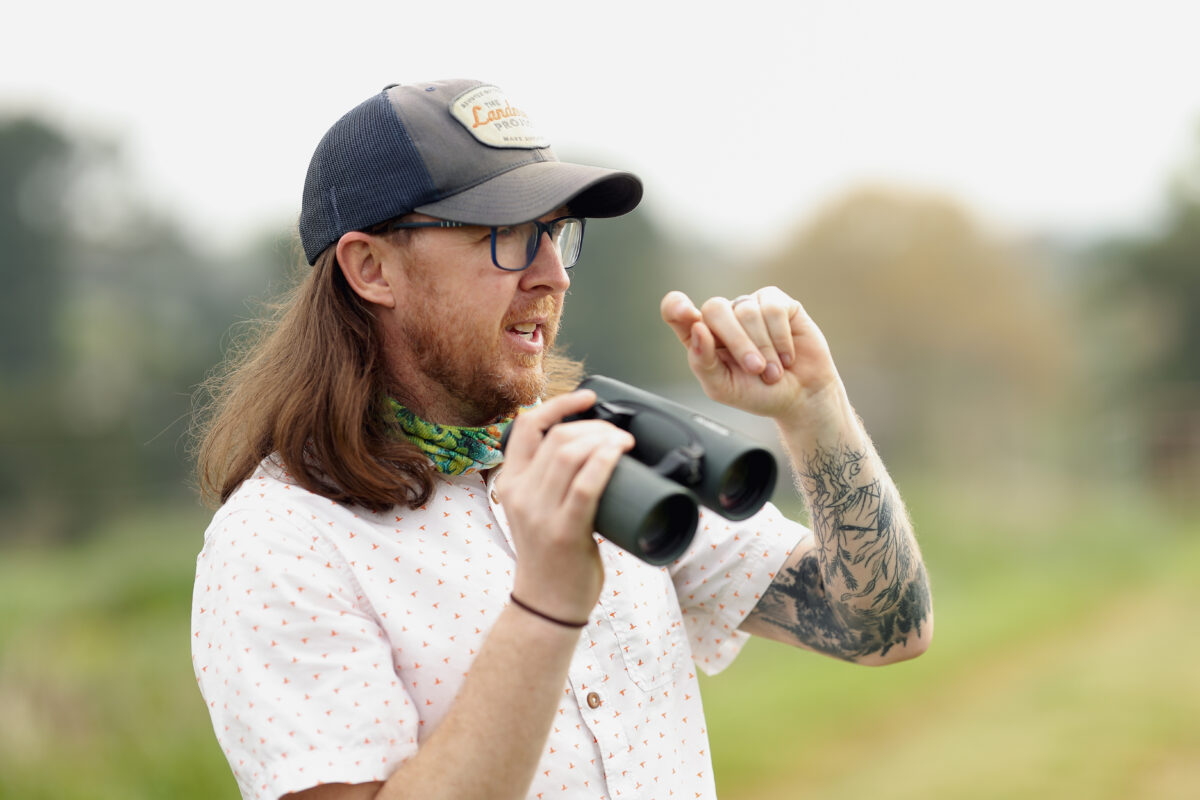
Grantee (University Researcher) Highlights
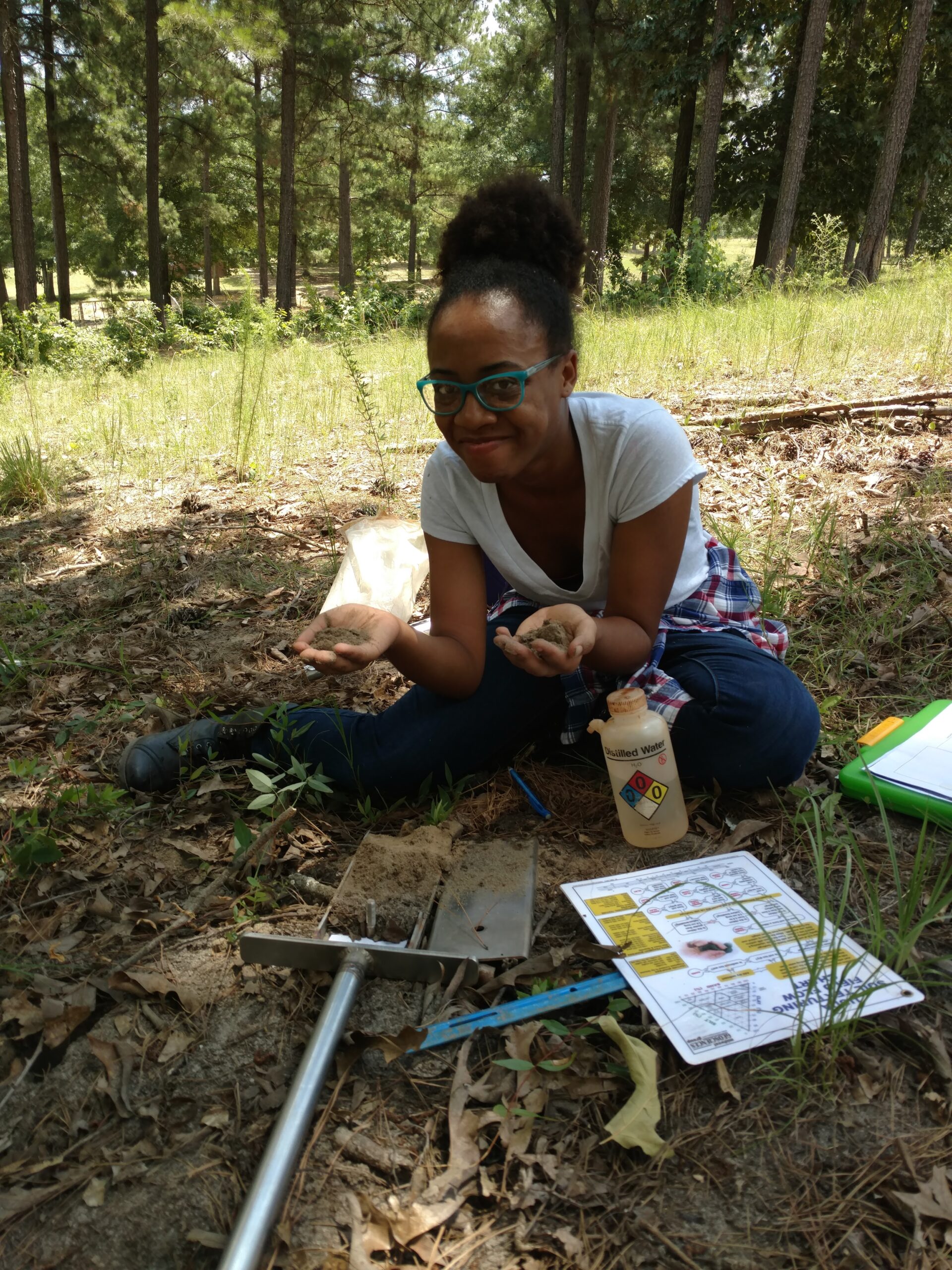
Zani Dembure, Furman University EES student, measures soil structure by evaluating color, texture, makeup and vertical layers. Credit: John Quinn
Quinn attributes his return to sustainable agriculture research to the SARE grant. By catalyzing his relationships with local farmers who shared the challenges they were experiencing, the project motivated Quinn to study practical, sustainable solutions, which he has published about extensively. Also attributable to the grant, Quinn deepened his understanding of local ecological system dynamics and continues to build upon that learning. His research portfolio now includes multifunctional farm landscapes and a consulting practice focused on sustainable systems.
Other Stakeholder (Students, Farmers) Highlights
Dr. Quinn recieved supplemental funds from SARE to fund undergraduate research support at his lab. Students contributed to the project by clearing land, collecting soil samples and bird occupancy data, and engaging with farmers about their practices. Some have gone on to graduate programs in soil science and ornithology; Dr. Quinn believes their undergraduate research experiences at this lab made them more competitive applicants. He also believes the project’s outreach activities raised regional awareness of silvopasture. South Carolina recently received a Climate Smart Agriculture grant that includes forages for beef cattle. More pasture-based livestock producers are also selling their products at local farmers markets.
The Ripple Effect of Practice Change
The idea of silvopasture, or agroforestry is more prevalent now. A possible secondary or tertiary ripple effect of our project was South Carolina getting a Climate Smart Agriculture grant last year ... livestock and silvopasture are part of that. So perhaps because we did this work, presented at meetings and shared it. ... I would like to think we brought conversations about silvopasture to the region. It is interesting to see how many pasture-based livestock producers there are now. You go to the farmers market and six or seven are doing pasture-based management. Did we create that market? No. Did we help advance and support farmers who were thinking about it and built the comfort level for them to come up? I would say, yes.”
—Dr. John Quinn, Research and Education Grantee
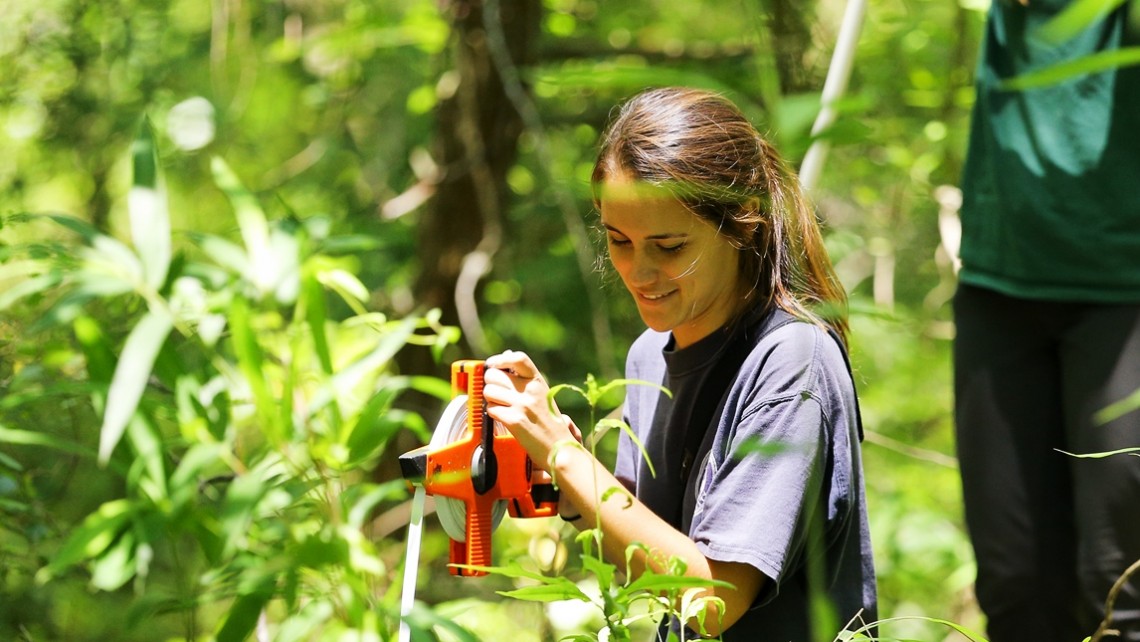
Sustainability Impacts
Quinn's team partnered with four farmers to restore forest patches invaded by exotic plants and develop sustainable grazing practices on their land. In the short-term, four bird species of South Carolina conservation concern returned to the improved forest sites. The farmers also reduced the recovery time between grazing periods, lowering production costs while adding organic matter to the soil.
Soil changes so slowly; you want to have a ten-year window to give that organic carbon enough time to recover. It’s hard to show change. We showed that the bird communities change from year one to year two, just by clearing that understory ... but does a turnaround in year two mean it’s going to be there in year five? I’m confident our farmers are all more knowledgeable and have a better attitude about silvopasture than they did when the project started. How many of them will continue that behavior? These are harder questions to answer. It’d be really interesting to go back to the original system in 10 years and see what has lasted. ...”
—Dr. John Quinn, Research and Education Grantee
Short Grant Cycles Limit Evidence Generation
Barriers
Soil health changes too slowly to document during a three-year grant cycle, so Quinn’s research team was only able to collect baseline soil quality data. Similarly, short grant cycles limit knowledge-building about the persistence of desirable outcomes. It is unknown whether promising findings during the grant period have been maintained over time. The ongoing struggles of small-scale producers to persist presented another barrier. Some of the farmer collaborators the research team partnered with have since been forced to shutter their enterprises. Quinn continues to study this challenge with funding from SARE.
Shared Power Between Researchers and Producers
SARE is very respectful of the time and effort it takes for farmers to contribute meaningfully to on-farm research. A half-day workshop where you talk through things is wonderful, but if you pay a farmer, both for their time and the space you’re using on their land, that is giving them an equal seat at the table with us as researchers. ... If we want more on-farm research, which is harder to do because of the uncertainties, complexities and demands of different stakeholders, supporting the farmers in that process is key.”
—Dr. John Quinn, Research and Education Grantee
Contributors
The pork farmers who opened up their land for the project engaged as equal partners with the power to push back on ideas that did not align with their needs or values. For example, they did not allow the research team to plant non-forage species, such as native wildflowers, at field edges or fence lines to increase biodiversity. They only permitted income-generating forage plantings. These “flat” power dynamics amplified Quinn’s understanding of how to engage in authentic, reciprocal learning and practice change with producers.
